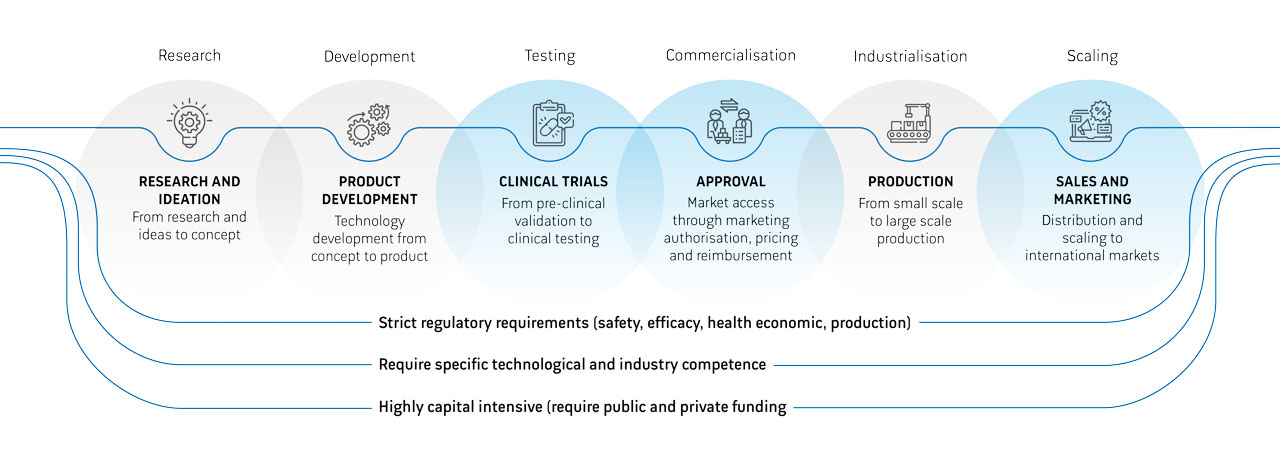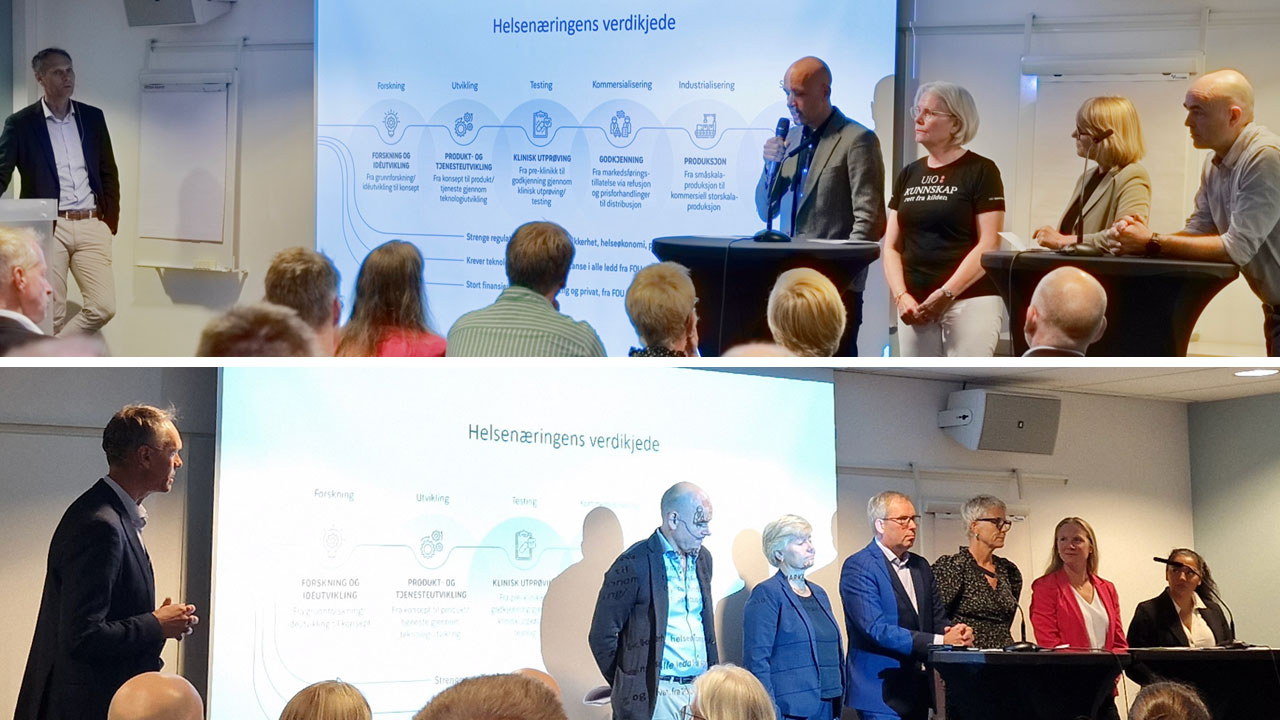This spring, the health incubator Aleap invited the UiO Growth House and the entire innovation ecosystem, including health clusters and incubators in Oslo Science Park, to collaborate on developing a value chain for the health industry.

More people need to understand the big picture in order to do something about the bottlenecks
The background for the initiative was the need Aleap had seen for a common language about the health industry and increased understanding of the big picture.

“When politicians, policy makers or other government officials come to Aleap, it is difficult for them to understand the complicated picture and the message about our needs,” says CEO of Aleap Erling Nordb?.
He thinks everyone will benefit greatly from using the value chain in discussions about the need for changes in framework conditions.
Important for realising the ambitions in the new road map for the health industry
The value chain also has an important role when all the players in the innovation ecosystem and the authorities are about to realise the ambitions set out in the government's road map for the health industry that was launched 23 August with 12 focus areas and 41 measures.
The increased understanding of the value chain for the health industry can be used to set the right priorities to speed up the development of the Norwegian health industry, therefore the proposal to make a value chain was also well received by those that Aleap invited into the work.
The university is an important part of the value chain

“From the university's side, it has been important to get the research and development that takes place in academia into the entire value chain. We have a central role in the value chain, not only at the start where ideas are developed and matured, but also for testing and analysing products and technologies in collaboration with industry and social actors. In addition, we contribute by educating candidates who have the skills we need to build a strong Norwegian health industry and by developing new technologies that are needed throughout the value chain,” says director of the UiO Growth House Hilde Nebb.
"The UiO Growth House was actually established to ensure that more innovation ideas from research find their way into the value chain and are put to use for the benefit of patients and society. We need many ideas for some of them to end up in products and technologies that can be exported, so it is important to have the right support mechanisms in place also in this early phase of the value chain."
New measures already underway
To get more ideas from academia into the value chain is one of the needs that Aleap is already in the process of doing something about as a direct result of the work with the value chain.
"We have, among other things, established a bootcamp for early-stage entrepreneurs to stimulate more people to gain insight into what is required to go from research to product," says Nordb?.

The UiO Growth House and Inven2, which is the technology transfer office of the University of Oslo and Oslo University Hospital, are partners in the bootcamp.
“Through the bootcamp, our researchers gain an increased understanding of the innovation process and can take their projects one step further towards the market,” says senior innovation adviser Beate Rygg Johnsen, who is the UiO Growth House representative in collaboration on the bootcamp as well as the work with the value chain in collaboration with the UiO Growth House communications adviser.
Launched in Arendal

Bottom picture from panel discussion on the need for support mechanisms throughout the value chain: Erling Nordb?, CEO, Aleap (chair), Sveinung Hole, CEO, Sarsia, Hanne Mette Kristensen, CEO, The Life Science Cluster, H?kon Haugli, CEO, innovation Norway, Ingvild Aal?kken, senior adviser, The Norwegian Medicines Agency, Mari Sundli Tveit, CEO, The Research Council of Norway and Nimrah Ramzan, The Norwegian Labour Party. Photo: The UiO Growth House.
The value chain was presented to a larger audience for the first time at the event "Road map and value chains as important tools for realising the potential in the new Norwegian health industry" during Arendalsuka. There, a number of different actors, including the public policy and funding apparatus, commented on the value chain. The need for capital for, for example, clinical trials; competence throughout the value chain, for example in the production of pharmaceuticals and scale-up; and the need for purchasing arrangements that enable companies to showcase customers in the public home market were some of the aspects that were highlighted as important.
Ready to use!
The value chain can now be used by all actors in the innovation ecosystem. Aleap will continue to work on it based on input and publish updated versions regularly.
Download the value chain to use in presentations.